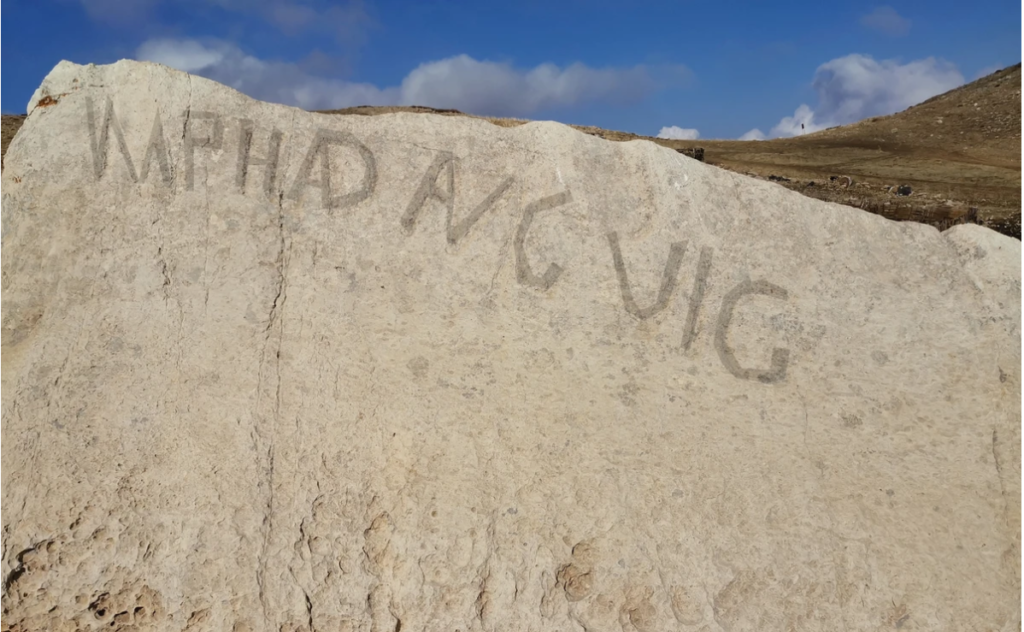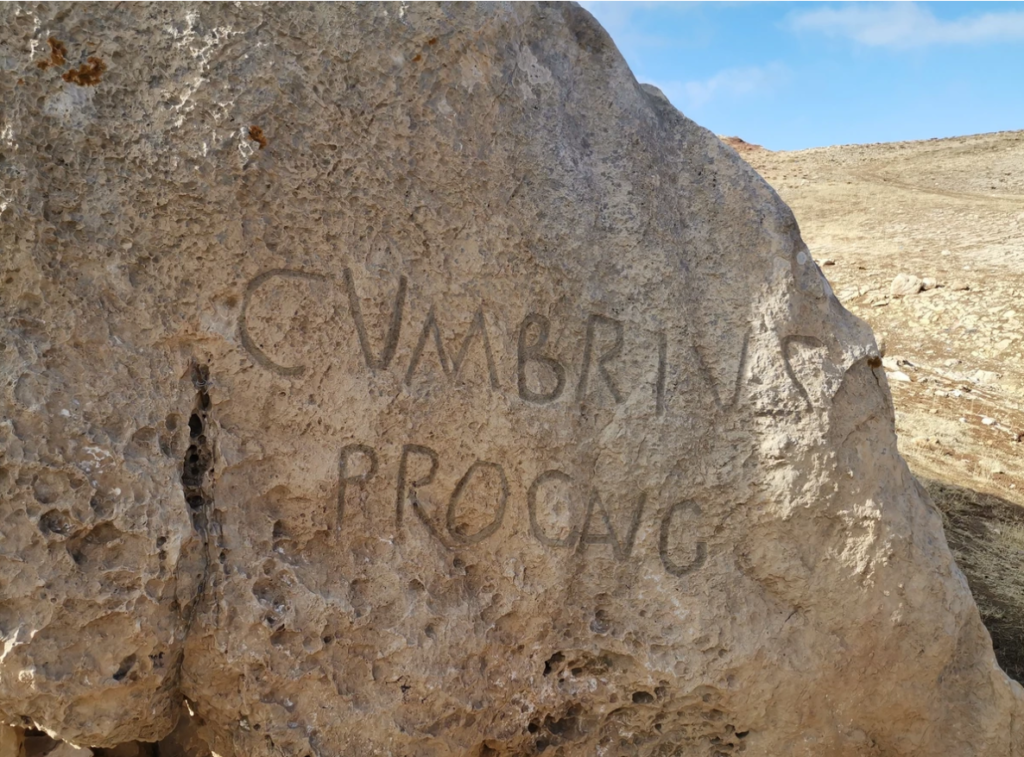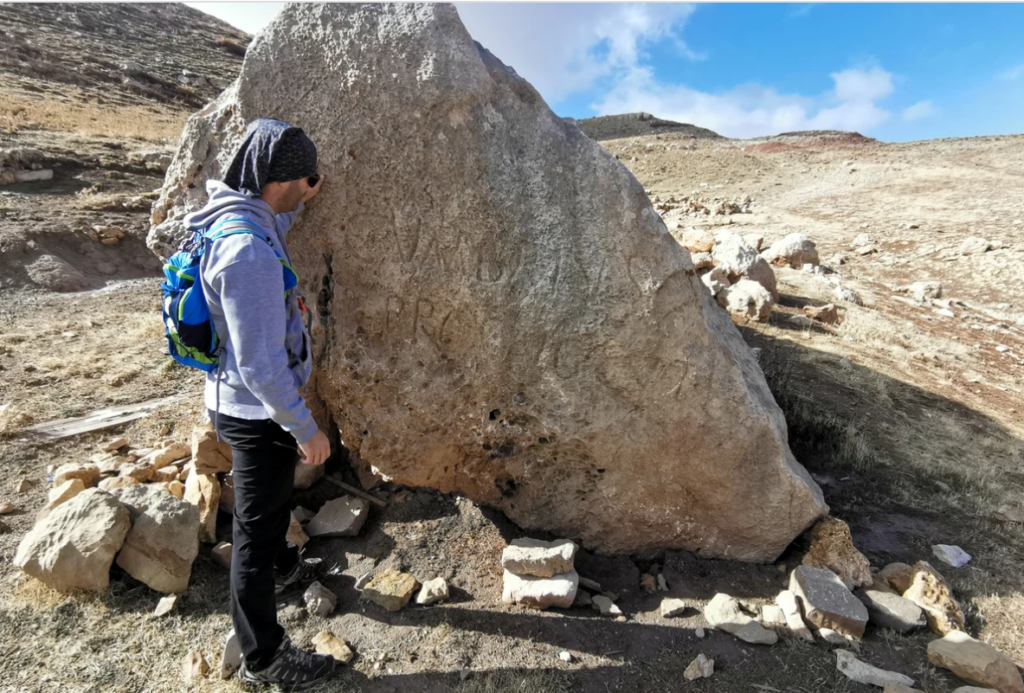An important Latin inscription can be found on a boulder located on the highlands of Akoura, in an area commonly known as Tém El Qoubour (mouth of the tombs).
Historical Background
Between the 1st and the 2nd century AD, a massive deforestation of the Lebanese mountains took place for commercial and construction purposes. This event threatened the industry of ship-building, putting at risk the maritime military and commercial power of Rome over the Mediterranean Sea.
Consequently, Emperor Hadrian (76 AD – 138 AD) prohibited cutting down four main species of tree necessary for naval construction – The Cedars, the Cilician Fir, the Cypress Leaf Juniper and the Oak tree.
This ban was reflected through hundreds of rock engravings between the Metn and the Akkar districts.
These inscriptions are known today as the Hadrian Inscriptions.
Inscription
The rock bears three inscriptions, each on one side:
South-East side – IMP HAD AVG VIG which stands for IMPerator HADrianus AVGustus VIGilarium.
Emperor (IMP) Hadrian (HAD) Augustus (AVG) Forest Nursery (VIG) – this inscription states that this location houses a forest nursery, part of the imperial domain of the Emperor. According to some scholars, VIG may also mean a “guard house” which main function is to protect the forest from exploitation and wild fires.
East side – C VMBRIVS PROC AVG which stands for Caius VMBRIVS PROCurator AVGustus.
Caius (C) Umbrius (VMBRIVS) procurator Augustus (AVG) – this inscription states the name of the procurator of the region (Caius Umbrius) who was responsible for protecting the imperial domain.
North side – IMP DP which stands for IMPeratoris Delimitatio Pascuorum.
Emperor (IMP) Forest Boundaries (DP) – this inscription states the limits of the forest imperial domains. This particular inscription is hardly clear due to erosion.
Importance
The Hadrian inscriptions can only be found in Mount Lebanon,making it a unique heritage in the world.
This act by Emperor Hadrian is considered by many scholars as one of the first initiatives to protect the rich forests of Mount Lebanon. A similar act was executed about 700 years earlier by the Assyrians who ruled over Lebanon when, at one point, the forests belonged to the Assyrian empire, thus prohibiting the cut down of trees and limiting this act to the governors only.
The area can be reached through a hiking trail, 30 minutes from the road.
A similar inscription can be found on the way up to Laklouk.
Karim Sokhn
Tour Operator & Tour Guide
References
AHL, Jean-Paul Ray-Coquais, p. 124 – 129
Les Inscriptions Forestieres d’Hadrien, Hani Abdul-Nour, 2001, p. 77
Monuments et inscriptions de Syrie et du Liban, Rene Mouterde, p. 24




